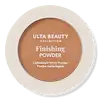What's inside
What's inside
 Key Ingredients
Key Ingredients

 Benefits
Benefits

No benefits
 Concerns
Concerns

 Ingredients Side-by-side
Ingredients Side-by-side

Ethylhexyl Methoxycinnamate 5.94%
UV AbsorberTitanium Dioxide 1.7%
Cosmetic ColorantBenzophenone-3 2%
UV AbsorberTriethoxycaprylylsilane
Silica
AbrasiveNylon-12
Phenyl Trimethicone
Skin ConditioningPolyethylene
AbrasiveTalc
AbrasiveLauroyl Lysine
Skin ConditioningPhenoxyethanol
PreservativeEthylene/Acrylic Acid Copolymer
Emulsion StabilisingAluminum Dimyristate
Emulsion StabilisingBHT
AntioxidantDisodium Stearoyl Glutamate
CleansingSodium Dehydroacetate
PreservativeMethicone
EmollientPolymethyl Methacrylate
Isononyl Isononanoate
EmollientAlumina
AbrasiveCI 77163
Cosmetic ColorantMica
Cosmetic ColorantCI 75470
Cosmetic ColorantIron Oxides
Ethylhexyl Methoxycinnamate 5.94%, Titanium Dioxide 1.7%, Benzophenone-3 2%, Triethoxycaprylylsilane, Silica, Nylon-12, Phenyl Trimethicone, Polyethylene, Talc, Lauroyl Lysine, Phenoxyethanol, Ethylene/Acrylic Acid Copolymer, Aluminum Dimyristate, BHT, Disodium Stearoyl Glutamate, Sodium Dehydroacetate, Methicone, Polymethyl Methacrylate, Isononyl Isononanoate, Alumina, CI 77163, Mica, CI 75470, Iron Oxides
Ingredients Explained
These ingredients are found in both products.
Ingredients higher up in an ingredient list are typically present in a larger amount.
Methicone is a type of silicone and is a simpler form of dimethicone.
Silicones are used to enhance the texture of products and have emollient properties. Methicone is used to give products a silky texture and improves spreadability.
Mica is a naturally occurring mineral used to add shimmer and color in cosmetics. It can also help improve the texture of a product or give it an opaque, white/silver color.
Serecite is the name for very fine but ragged grains of mica.
This ingredient is often coated with metal oxides like titanium dioxide. Trace amounts of heavy metals may be found in mica, but these metals are not harmful in our personal products.
Mica has been used since prehistoric times throughout the world. Ancient Egyptian, Indian, Greek, Roman, Aztec, and Chinese civilizations have used mica.
Learn more about MicaNylon-12 is a polymer. It is derived from 12-aminododecanoic acid, an omega-amino fatty acid
According to a manufacturer, it is a talc substitute. Like talc, nylon-12 gives products a satin feel. The manufacturer also claims this ingredients does not block pores and has moderate oil absorption.
This ingredient may not be reef-safe.
Learn more about Nylon-12Phenoxyethanol is a preservative that has germicide, antimicrobial, and aromatic properties. Studies show that phenoxyethanol can prevent microbial growth. By itself, it has a scent that is similar to that of a rose.
It's often used in formulations along with Caprylyl Glycol to preserve the shelf life of products.
Phenyl Trimethicone is a silicon-based polymer. It is derived from silica.
Phenyl Trimethicone is used as an emollient and prevents products from foaming.
As an emollient, it helps trap moisture in the skin. It is considered an occlusive.
Learn more about Phenyl TrimethiconeSilica, also known as silicon dioxide, is a naturally occurring mineral. It is used as a fine, spherical, and porous powder in cosmetics.
Though it has exfoliant properties, the function of silica varies depending on the product.
The unique structure of silica enhances the spreadability and adds smoothness, making it a great texture enhancer.
It is also used as an active carrier, emulsifier, and mattifier due to its ability to absorb excess oil.
In some products, tiny microneedles called spicules are made from silica or hydrolyzed sponge. When you rub them in, they lightly polish away dead skin layers and enhance the penetration of active ingredients.
Learn more about SilicaThis ingredient is a preservative with antimicrobial properties. It is the sodium salt of dehydroacetic acid.
It is especially effective at preventing bacterial and fungal growth in low concentrations.
Talc is a clay mineral. It helps absorb moisture and improve the texture of products. Like other types of clay, Talc can have a slight exfoliating effect on skin. Talc can be added to increase the volume of products.
Some Baby powders are made by combining talc with corn starch. The word "talc" comes from Latin and originates from Arabic. Talc is a mineral commonly found throughout the world.
If you have any concerns about using talc, we recommend checking out the FDA's official page.
Learn more about Talc